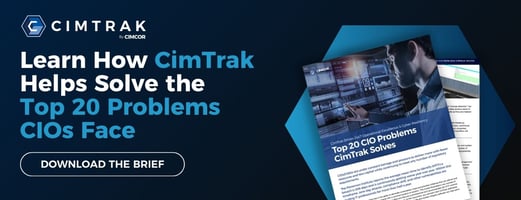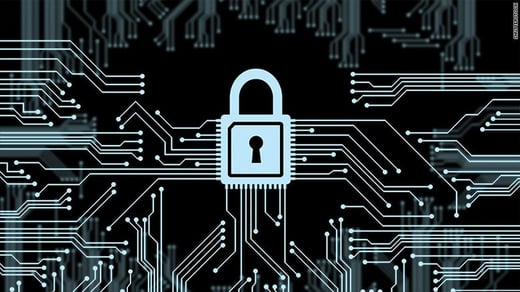CIOs and CISOs are under constant barrage and pressure to deliver more with fewer resources and less capital, all while continuing to meet any number of regulatory requirements.
The Ponemon Institute reports the average mean time to identify (MTTI) a breach is 206 days and is continuously getting worse year over year. Within this timeframe, zero-day attacks, compliance drift, and other vulnerabilities are eluding IT professionals for more than half a year.
Oftentimes, the key to solving this problem lies in eliminating unnecessary costs and prioritizing initiatives that can deliver and solve a multitude of issues and requirements with a common product or solution. This is best illustrated in several best practices and compliance requirements that outline and discuss a prioritized list and recommended seat of IT controls that are essential to a safe, trusted, and compliant infrastructure.
In this three-part series, we'll discuss how file integrity monitoring (FIM) addresses many of these problems CIOs/CISOs face today and how file and system integrity software can help solve many of those problems.
1. SECURITY RISKS INCLUDING ZERO-DAY THREATS
Security risks such as zero-day threats can easily get through firewalls and past antivirus technologies, causing unforeseen problems and circumstances for security and compliance.
File and system integrity monitoring software should have the ability to detect changes in real-time from a known and trusted state of operation. FIM tools should have a low Mean Time To Identify (MTTI) a breach or security incident and measure in seconds instead of the industry average of 206 days. A solid FIM approach should be based upon an understanding of what is correct and executed to operate/run in an IT environment as opposed to utilizing a reference database of known malicious code that will always be reactive in nature.
2. 24x7 SITUATIONAL AWARENESS
CIOs/CISOs are expected to know the risk profile and status of all the systems and applications at all times. Without knowing the trusted state, it can cause CIOs/CISOs to be reactionary and constantly putting out IT fires. Organizational productivity may also take a hit with unexpected changes and slow responses to resolve issues.
File and system integrity monitoring captures and records a known and trusted baseline of the target system(s) or device(s). As a result, any and all changes to those systems and devices should be detected in real-time and correlate with the respected and permitted changes approved by authorized personnel. File integrity monitoring software with an automated, full-integrated, and streamlined workflow provides the 24x7 situational awareness needed. This situational awareness includes knowing that unknown and unexpected changes can be dealt with quickly with minimal disruption to the operation and security postures.
3. CONCEPT OF "ZERO TRUST" SECURITY
"Zero Trust" is a concept where every change is questioned to ensure risk and risk mitigation are constantly tested and questioned to improve an organization's security posture continuously. Unfortunately, mistakes are often made, and bad actors can take advantage of the vulnerabilities causing disruption, non-compliance, and a myriad of other problems. These mistakes can result in critical data being stolen, or even possible fines accrued and loss of reputation to the organization. Additionally, no one wants to be responsible for making the error and receiving blame for the system's disruption and/or security breach.
File and system integrity monitoring tools should support a "zero trust" security posture as it knows what the trusted state should be, and provides a process to alert and remediate if and when unexpected or unauthorized changes occur. The change detail provides forensic evidence of what changed, who made the change, when the changes occurred, or if the changes were authorized. The focus and spotlight on unauthorized or unexpected changes will be recognized instantly, thus limiting the risk and disruption to the organization.
4. INSIDER THREATS
Insider threats rank among the top threats to detect and recover from for organizations. Behavior monitoring and "change detection" are often utilized to learn staff behaviors and activities over a period of time. Unfortunately, this provides endless false-positives alerts for changes performed by authorized IT and can cause a tremendous problem for identifying real threats, as they are masked as the "noise" of all the changes.
With the help of file and system integrity monitoring, CIOs/CISOs can be assured that FIM provides 24x7 monitoring and protection against insider threats by implementing a closed-loop process of integrity management and change control. Understanding the known, authorized, and expected changes eliminates more than 90 percent of the noise. What remains of the changes is everything unknown, unwanted, or unauthorized, and a FIM tool can provide an alert, or a trouble ticket can be generated to ensure a predictable process and workflow will resolve the problem immediately.
5. SKILLS GAP
Skills gaps exist within many organizations that are trying to provide a balance of budget, security, compliance, and system availability. When unintended or malicious change occurs, organizations may not have the right level or number of skilled staff to address the issue of system integrity. Staff can become overwhelmed quickly, leaving potential risk and exposure to operations, compliance, financial impact, and organization reputation.
CIOs/CISOs gain a force multiplier with a FIM tool, especially one with an automated workflow and integrated service management capabilities to provide a repeatable process that can be relied on to fill in the skills gap. By automating the processes and workflows with trusted best practices, the chances of human error are significantly reduced, and the skills gap challenge is met.
6. STAFF OVERLOADED
CIOs/CISOs and staff alike can become overloaded to the point that corners are cut to save time and money. Too many logs, alerts, and constant firefighting leave CIOs/CISOs and staff in the dark as to where the real problems and risks exist. Technology is at the heart of the products/services and relied on the IT department as a core function of delivering their value. With limited IT resources and a never-ending list of projects and deliverables, problems will occur. CISOs/CIOs and staff may bear the brunt of the responsibility as it can appear as if they do not have control of the systems combined with a loss of productivity.
File integrity monitoring is the cornerstone of IT security, compliance, and network uptime. A robust FIM solution's functionality assures customers that the repetitive steps for the day-to-day management of security, availability, and compliance are automated in a predictable and trustworthy process. In addition, this automation will allow staff to regain time and focus on pressing issues that align with the business objectives and deliverables.
7. NETWORK NOT RESILIENT
CIOs/CISOs often face challenges stemming from circumvented processes, human errors, or malicious activity resulting from unexpected/unauthorized changes. These challenges can create problems within compliance or even a security breach. Network and system outages often call for an "all hands on deck" type of approach to understand the problem and determine the root cause analysis to remediate and prevent the problem from occurring again.
File and system integrity monitoring should allow CISOs/CIOs to rely on change detection and an automated workflow to manage integrity drift and the process of change reconciliation and remediation of the problems caused by malicious and non-malicious changes. In addition, FIM software should have an MTTI and Mean-Time-To-Contain (MTTC) that is measured in seconds, as opposed to the industry average of 206 and 73 days, respectively.
In parts two and three of this series, we will cover problems 8-20. Or you can download the full brief below. Learn More about additional ways file and system integrity monitoring can help in your environment today.

July 22, 2021




